Our United Kingdom Car Rental Experience
Understanding rental options, driving on the left side, navigating, . . .
My husband and I rented a car for a portion of our most recent visit to England and Wales. We’ve rented cars in the United Kingdom before, but enough time had passed since our last visit that we had to discover the process all over again. We had more to deal with than driving on the other side of the road. (In North America, we drive on the right side of the road; traffic in the U.K. is on the left.)
Booking the Rental
As per our usual mode of operation, we started our search for a car rental online. Through that search, we located useful information and gained insight into what we might expect to pay.
Although my husband and I are of an age where 70 no longer seems old or far away, we still have some years before we reach that milestone. If we were already there, our search would have been more difficult. Many U.K. car rental companies will not rent to someone over the age of 70. In some cases, the age limit is 74 or 75. It appears there are a few places with no age restrictions, but I don’t know how easy these would have been to find.
There was a significant additional cost to renting an automatic transmission versus a manual. Eager to save money, we decided on the manual transmission. I learned to drive on a manual transmission car, but haven’t driven one in decades. Fortunately, that didn’t matter. It was my husband who would do the driving. Although he has more experience than I do with manual transmissions, it had been a few years since he’d last driven one. He didn’t agree to my suggestion of borrowing a friend’s car to practice with before our trip, saying it might be more confusing. In the U.K., the shifting would be done on the left, not on the right. Note that even though the steering wheel and gear shifts are on the other side in British cars, foot pedals are in the same position as in North America. (Postscript: My husband adjusted quickly to the manual transmission. It was the first time he’d seen a 6 gear transmission.)
As we began comparing options online, we became increasingly confused around the details of what was included, especially with regard to insurance. We went to our local office of the Canadian Automobile Association. They offered a prepaid package which seemed like a fantastic deal. (Postscript: there was an additional charge for tax which upped the price somewhat and some additional charges we were prepared for, such as the fee for drop-off at a different location than pick-up.)
Third party liability is a legal requirement in the U.K. and is generally included in the base car rental price. Collision insurance, or collision damage waiver, is usually an extra charge which reduces your liability in case something happens to the car, from as high as the full cost of the car to something more manageable. That more manageable amount varies from company to company and can be as high as £1500. An additional coverage, car hire excess insurance, is available to reduce that amount to zero. The cost of this additional coverage can be more than the overall rental cost. In past rentals in North America, we’ve relied on my credit card coverage for collision coverage. I called the company to confirm if I could do the same in the U.K. The answer was yes, but we would have to decline all car rental company offered collision insurance. The prepaid package deal CAA had for us included the collision damage waiver. We decided not to rely on credit card coverage. And after a fair bit of discussion, we decided to take a risk and not buy the excess insurance. (Postscript: We had no incidents or damage to the vehicle and never had to deal with insurance claims.)
When we picked up the car, the car rental agent reminded us the car ran on petrol (gasoline in North America language). This was important because half of the cars in the U.K. run on diesel. We would not want to select the wrong fuel type at petrol stations.
We also chose to pay the car rental company for a full tank of petrol, which meant we would return it empty. We don’t usually do this because of the cost, but in this case the price quoted was comparable to that at petrol stations. I remembered our last U.K. car rental eight years prior when we were to return the car with a full tank. Thinking we would find another petrol stations closer to Heathrow, we passed by our last chance to fill up on the motorway. We returned the car with an empty tank and as a result were charged double for the petrol.
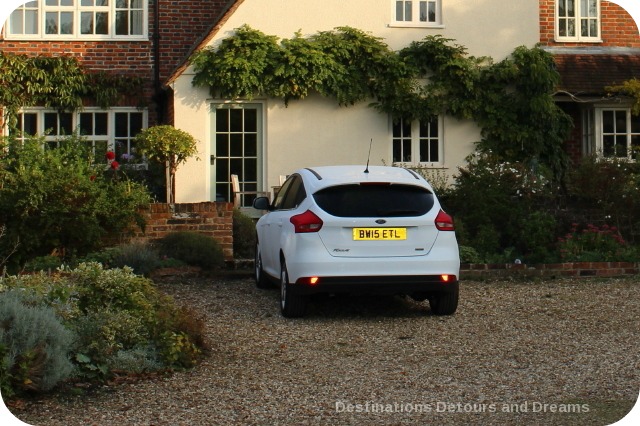
Driving in the U.K.
The most obvious difference about driving in the U.K. versus North America is driving on the left side of the road instead of the right. For our first couple of days, as I sat in the passenger seat, I felt my husband over-adjusted and went too far to the left. I leaned forward and watched out the window to see how close he was to the white line. Sometimes he was on it. Sometimes he was over it. Most of the time he was properly in the lane and the perception of being too far to the left was only in my head.
Then there are the roundabouts. Roundabouts are becoming more common in North America, but we’ve still not encountered any areas with the prevalency that occurs in the U.K. The two or three lane roundabouts at busy intersections can be the most disconcerting. A number of very busy roundabouts have traffic lights to control entry. In all cases, we needed to remember to enter to the left and proceed in a clockwise direction.
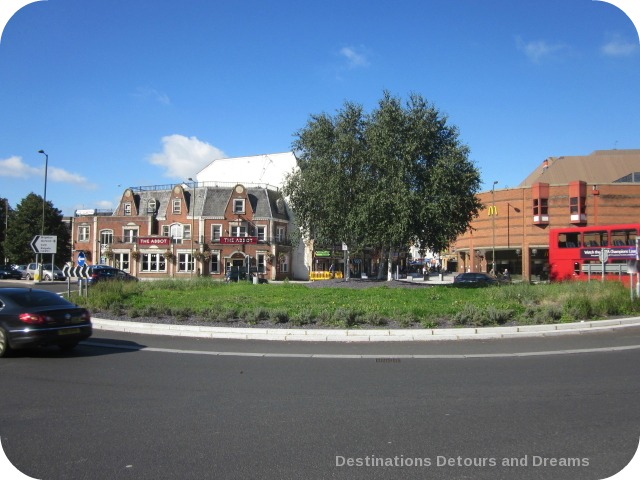
It is always a good idea to learn the rules of the road, traffic signs, and speed limits when driving in a foreign country. Most of the signs we encountered were visual enough to easily interpret the meaning. But there are also unofficial rules of the road. Prior to renting our vehicle, my husband queried our British friend about these. So when another vehicle at an intersection flashed its head lights at us, we knew the driver was signalling us to go ahead. Headlights may also be flashed as a thank-you for letting someone into the traffic flow.
Distances between locations are short by North American standards. But distances between exits on the motorways (M roads) can be long, sometimes more than twenty miles. This can be problematic if you miss your exit or if you wind up on the motorway in the opposite direction of where you want to go. I think we handled any back-tracking and regrouping with incredible calmness.
Similarly, there can be quite a distance between services on the motorways. We were amazed when we stopped at a services exit to find a mini-town. A large parking lot full of people, a mall with stores and restaurants, and further down the road a petrol station and another restaurant. We thought there must be a village here, but found out that was not the case. This was solely services for drivers on the motorway. It was a beautiful Sunday afternoon. Whether people out for a weekend drive made this a busier place than normal we didn’t know.
We experienced variable speed limits for the first time. Sections of the motorways are designated as having variable speed limits. At times when the speed limit is different from the standard, the overhead signs alert drivers. Studies have shown that in times of congestion traffic actually flows better if everyone slows down a little. Trying to keep at the usual speed results in stop-and-go situations and creates bottlenecks.
We don’t use GPS and did not have one in the rental car. We relied on old-fashioned paper maps, signage, my navigational skills, and the occasional reference to Google maps on my phone. I had to think fast the few times when signs were so obscured by foliage I couldn’t read them until we whizzed past. My husband was always prepared to drive through roundabouts more than once, especially those with several streets emanating out like spokes on a wheel, to give me enough time to read and comprehend all the signage and ensure we selected the correct spoke. We had a few wrong turns and the occasional turning around, but generally managed to get where we wanted to be. There was even one time we found the remote craft village I wanted to visit after we gave up and followed what appeared to be signs to a different craft village!
What has been your experience renting and driving a car in a foreign country?
If you enjoyed this post, sign up for Destinations Detours and Dreams monthly e-newsletter. Get behind the scenes information and sneak peeks ahead in addition to a recap of the month’s posts.
PIN IT
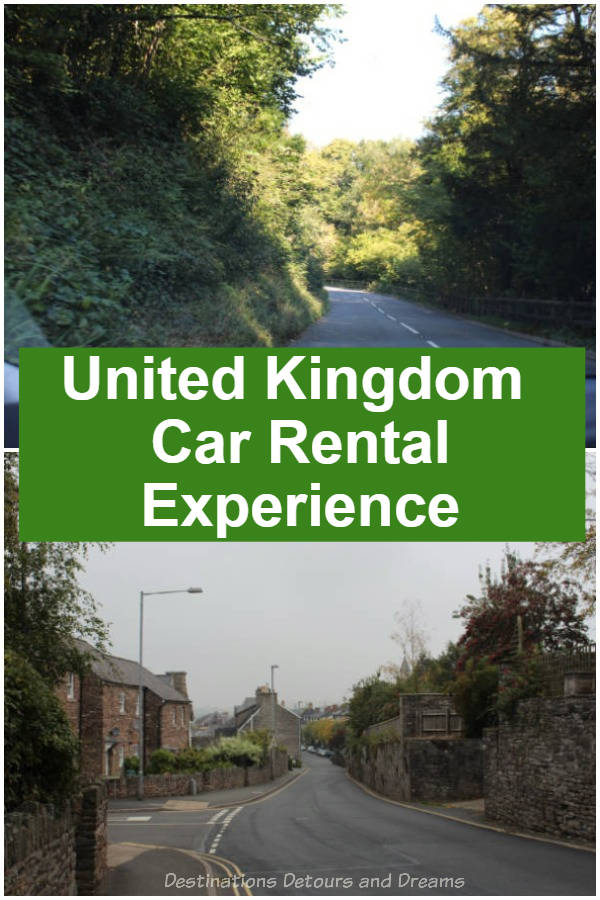

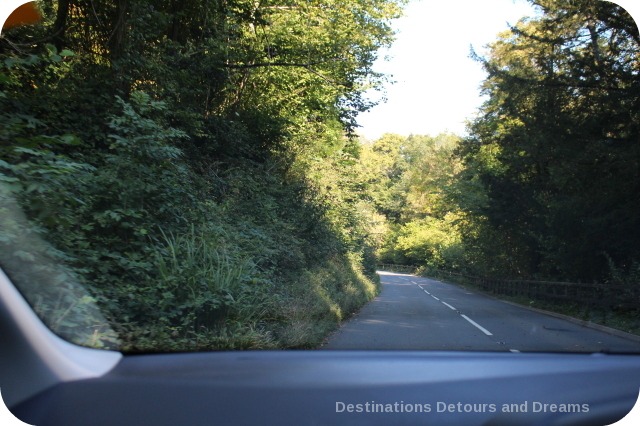
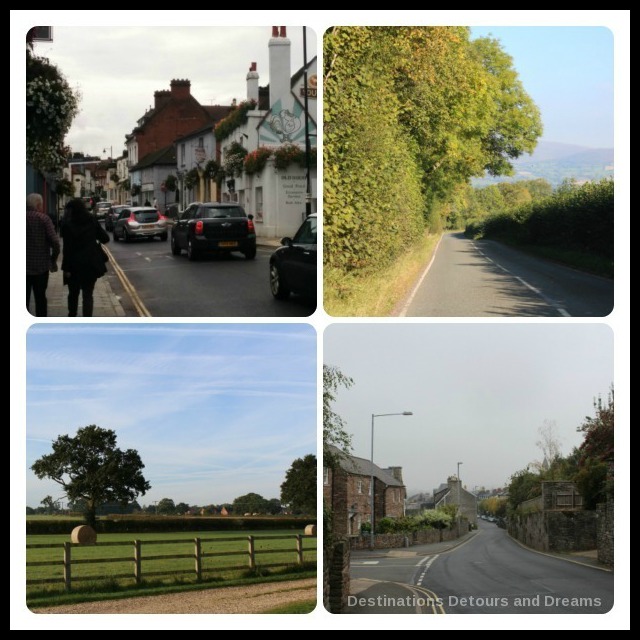
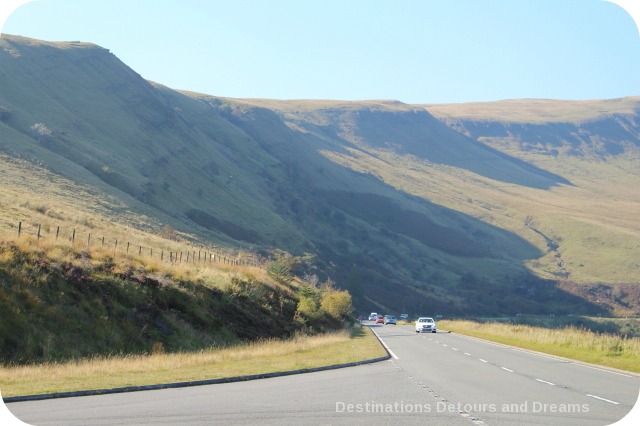
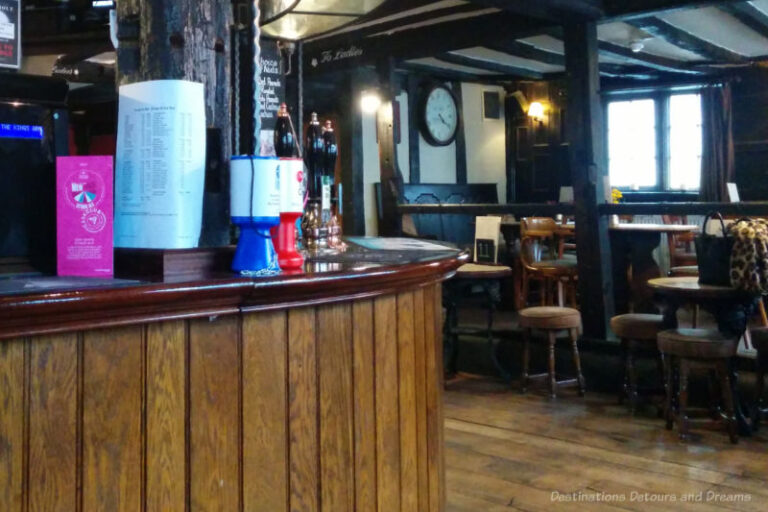



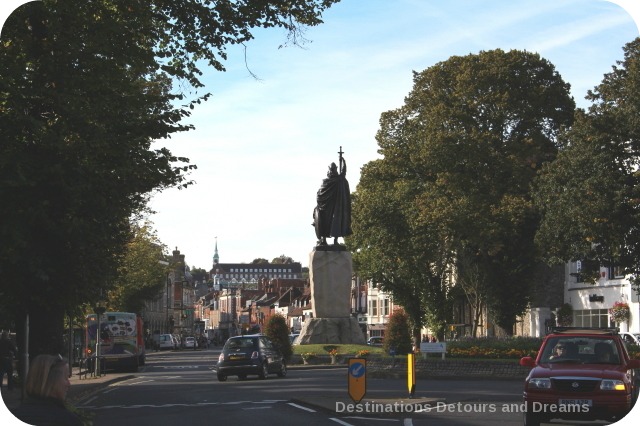
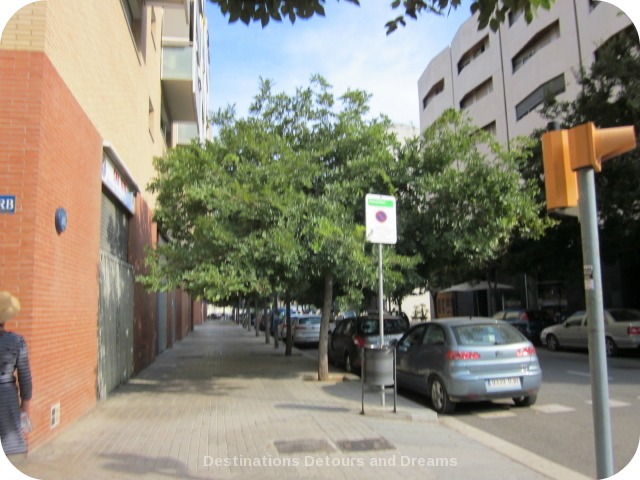
Very interesting! Reversing the lanes, the opposite driver’s side, a left side shift and dealing with a 6 speed transmission sound overwhelming and I picture us screaming (a bit) for the first few days trying to adjust! We just renewed our rental car lease in Portugal for a second month and, except for the roundabouts and a few signs there aren’t a lot of driving differences in Portugal. Lucky us! Anita
It wasn’t quite as overwhelming as it sounds. We would do it again.
Interesting, Donna. I never knew that you couldn’t rent a car after 70. I’ve never experience driving a car in Europe. But, when I was a kid, we visited Italy a lot to see family. My dad would always drive because he lived there and knew how to drive in Italy. But, some of the family members would drive so fast, I would see blur out the window. It was quite scary. Thanks for sharing.
Sabrina, the difficulties with car rental after age 70 applies in only a few countries, but England is one of them.
Sounds like a very complicated process to me…I admire your courage. And it sure looks like it paid off!
Jacquie, it felt complicated at the time, but perhaps some of that was our own doing. Not sure, but it was worth it.
Hi Donna, we’ve rented cars in foreign countries before also. Got to agree there is a lot to consider when choosingnit just to rent but drive in another country. But as straight forward as one might think. I never thought about not getting able to rent a car after 70 in some places. That stinks for the healthy able bodied 70 yr olds.
Susan, the issues with renting over age 70 seem a lot unfairer now than it did years ago and 70 seemed a long way away. I wonder if that age limit might move up a bit over the next few years. I think there may be some other options (I read an article that suggested leasing), but it sounds like it might require and lot of effort and research.
My hats off to you for driving in the UK. I love driving manual but to do that and drive on the left would drive me nuts. Also, NO GPS!!?? Granted there were two of you so that’s better. Guess I just have no sense of direction. One of the best reasons to have a GPS is to warn you of your speed as there are many speed traps around. I have no problem renting a car and driving in France or other European countries, but the UK. No guts. By the way, I think roundabouts are the best thing ever invented. If I’m ever unsure about where I’m going, I do what you did: go around, and around, and around!
Janice, we did comment a couple of times that it was good there was two of us. One to concentrate on the driving, the other on navigating. I too think roundabouts are great.
Driving manual in the UK meant I kept clunking my knuckles on the door to my right as I automatically reached out to shift with my right hand!
I don’t remember how it is in the UK, but here in the Netherlands, at unmarked intersections, a car approaching from the right has the right of way. When I first moved here, I thought the Dutch were incredibly rude, pulling out right in front of me from more minor roads and sometimes honking at me too. I fortunately learned the rule before getting myself in an accident!
Rachel, funny story about the knuckles! Your comment about cars from the right having the right of way illustrates how small differences in rules of the road can be a big deal. Always wise to find out the rules in a country.
Hi Donna,
Thanks for this very comprehensive study of car rental in the U.K. But I will strongly recommend that you ditch the paper maps and go with GPS from now on!
Either way, road tripping is so fun anywhere, and I’m glad you tackled the other-side-of-the-road challenge.
~Josie
Josie, I have used GPS on rare occasions. Even when I do, I still like the paper maps because they give me a sense of where I am overall. GPS isn’t infallible. I was driving with some cousins a few years and their GPS took us to the wrong house. But I acknowledge there are times it can be very helpful.
Oh we can so relate to this post! First, we always decline that additional insurance; between our own back home and the credit card, we figure we are double-covered. We’ve not opted to rent a car in the UK or anywhere else where the driver’s side is on the right but we have had some interesting manual and automatic-type cars all the same. I don’t drive an automatic and sadly as you noted they are cheaper so we end up with one and I have a driver. We did this during our recent stay in Greece and I’ve decided that I either need to learn how to drive a manual or we need to cough up the extra and get a car I can drive not only because I miss driving but because if something should happen to ‘my driver’ I’d like to be able to still get to the grocery store or seek help if needed. Fun post but so informative! Happy New Year!
I can relate to you wanting to learn to use a manual. At home, I am used to being able to get in the car and drive myself where I want to go. If we are away for short trips, it isn’t bad to rely on a driver because we’re likely going to places together anyway. But for a somewhat longer stay, it would feel restrictive.
We rented a car as well when we were in the UK so we can cover more areas like Wales. Bill is 70 so we found out that that was the last time we will be able to rent a car there. Well and good because we had some very close calls in the very narrow roads. But in Italy, Spain and France 70 wasn’t a limit. And we use our credit card coverage for all rental cars wherever we are. Colission insurance from rental car companies are exorbitant.
Carol, the narrow roads can be challenge, especially when you have a larger vehicle approaching (like a truck or tractor). Fortunately we managed all right.
I think I’ve vetoed the idea of renting a car for our next visit to the UK, but I might change my mind because it’s essential to be able to visit the little, quintessentially British places. My blog post about driving in Ireland is titled “The Wrong Side”. Nuff said. My husband (the driver) definitely drifted to the left—confirmed by the rumble strip on the motorways when he didn’t believe me. Your post is a must read for those contemplating car rental in the UK—or “car hire” as they call it. Best wishes for a healthy and we’ll traveled 2016 and by all means–Write on!
Thanks Suzanne. I could relate to a lot in your post about driving in Ireland. Although there can be challenges with car hire in the U.K., we would do it again. We like to get to those little, quintessentially British places.
Thanks so much for detailing all the hurdles you faced and overcome in renting a vehicle in the UK. It really makes a traveler think twice if other transportation options are available.
Even with the hurdles, we would rent again. Some places in the countryside are difficult to visit without a car. A big part of the hurdle is just knowing what to be prepared for.
They better change that rule-don’t they know 70 is the new 50? We rented in Ireland this fall and it was quite a challenge, but something I would do again. However, I must admit we splurged to avoid the manual transmission and thank goodness we did! Drive on…
Alison, I hope they do change that rule. When we rent again if I intend to do any of the driving we would also splurge on the automatic transmission.
I am SO impressed with you! Wow! We debated it when we traveled in Wales the last time. We knew the train system wouldn’t be the same as it is in Europe, so went back and forth. We finally wimped out. It turned out okay. The local bus system, although confusing at times, was great solely because the drivers were awesome.
Going back again to Wales this spring, I’m still thinking I’m sticking with trains, buses and feet. 🙂
Maybe.
Rose Mary, driving in the UK isn’t for everyone and public transit options usually work quite well. But I suspect our trip to Wales would have been a little different without our own car. We stayed in a small town in the Brecon Beacons.
My husband and I attempted driving in the UK – what a disaster! I blogged about it here http://bit.ly/1682nYK
Jan, I really enjoyed your post about renting a car in the UK. We rarely use a GPS so never encountered some of the GPS issues you ran into, but I could relate to everything else. Did Rick Steeves ever respond?
We rely on my travel agent to get us rental cars when ever we travel in Europe or even the USA. Your UK experience sounds better than ours in Italy. We love those roundabouts and wish they would get to our area. They truly keep traffic flowing.
Pat, we love the roundabouts too (even If we occasionally go around them a couple of times looking for the right road). A few years ago, a roundabout was built near our home in Canada to replace a busy 4-way stop. People unfamiliar with roundabouts talked about what a stupid idea it was and dreaded it. It has made the traffic flow much better through that intersection.